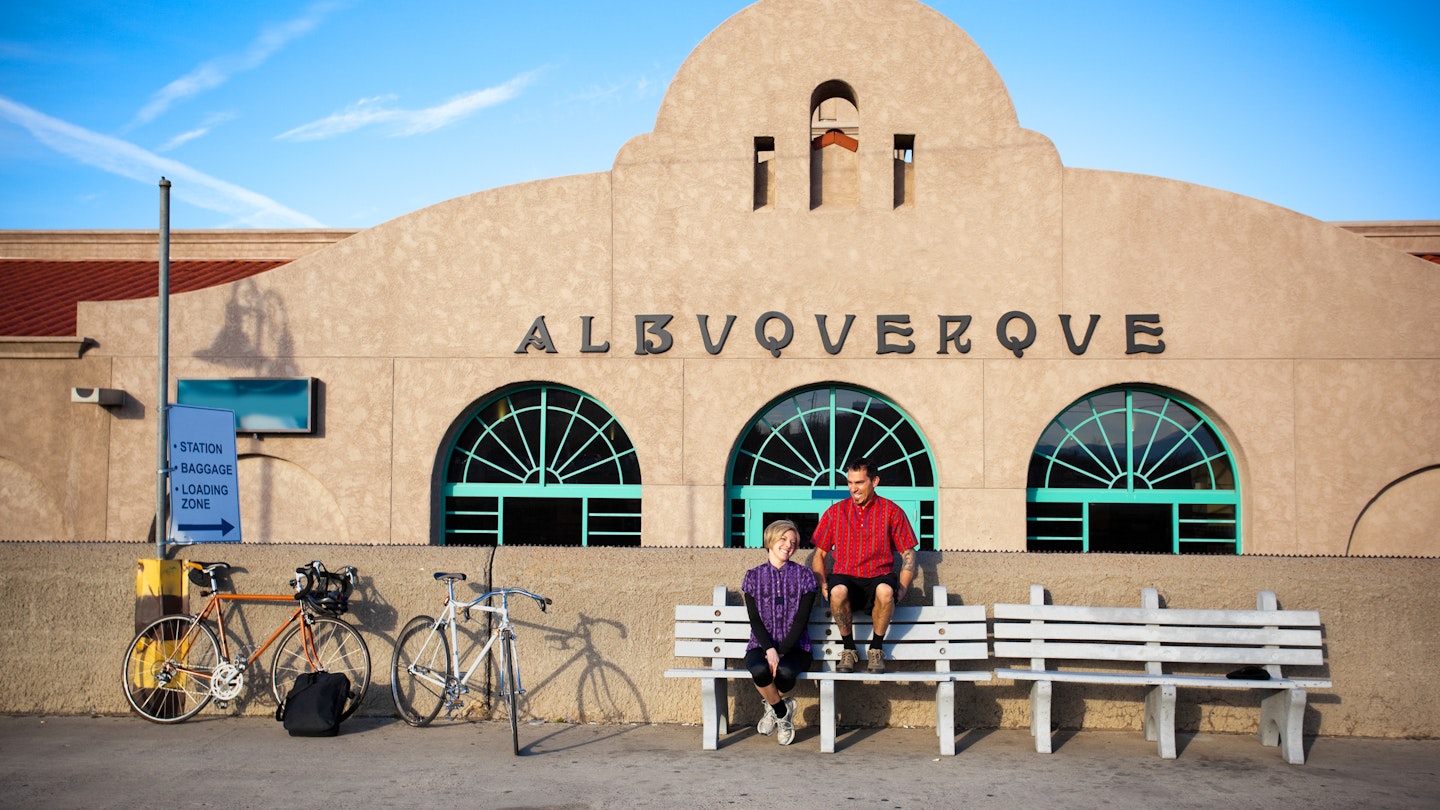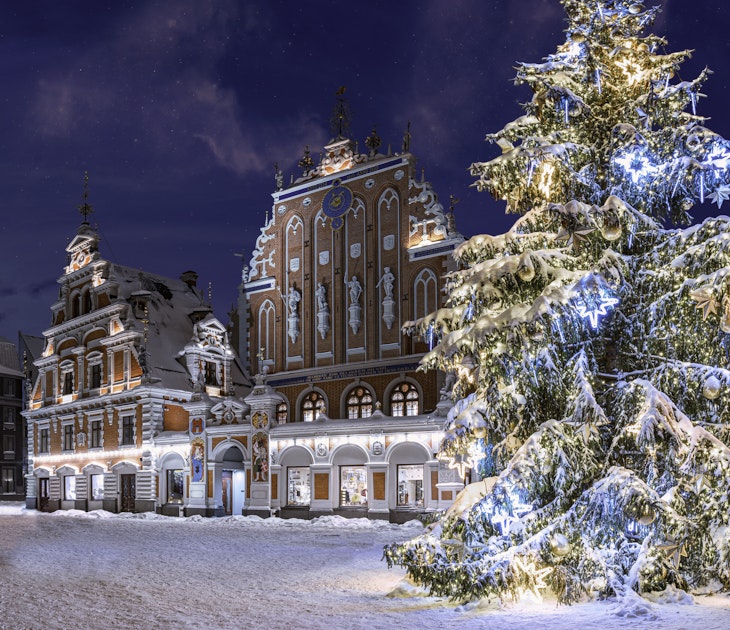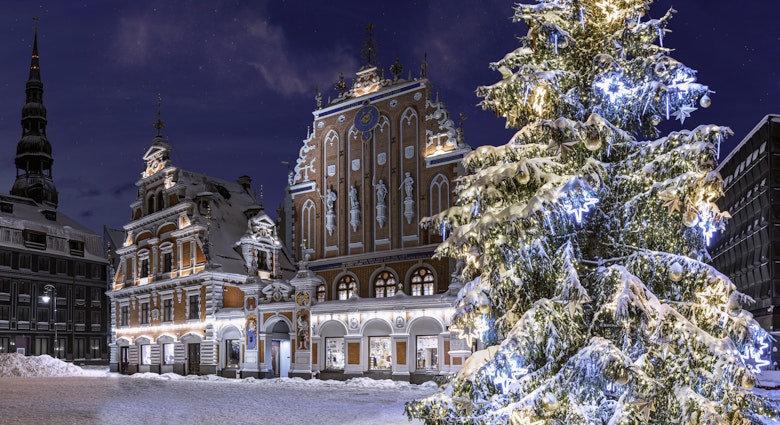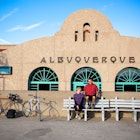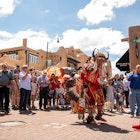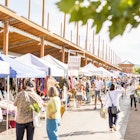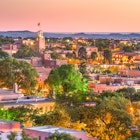From outdoor adventure to relaxed dinners under incredible sunsets, Albuquerque is a laid-back city steeped in centuries of diverse cultures.
Native American, Hispanic and American influences have created a city that celebrates creativity in its cuisine, art, music and architecture. Families learn about the Río Grande ecosystem at the ABQ BioPark, couples stroll the quiet alleys of Old Town and thrill-seekers ply the wilderness playground that is the Sandía Mountains.
At 5300ft in elevation, Albuquerque experiences four distinct seasons with hot summer days cooling off at night and snow blanketing the Sandías in the winter. Native American Pueblos welcome visitors to share in their feast days, and flamenco and folklorico dancing continue these powerful traditions from Spain and Mexico.
Discover historic Old Town
Established in 1706 by Spanish colonists, Old Town is Albuquerque’s cultural and historic heart. Centuries-old adobe buildings house shops and restaurants that edge the tree-shaded plaza. Native American potters and jewelers sell their art directly to buyers under the eastside portal, and 300-year-old San Felipe de Neri church welcomes all within its 5ft-thick adobe walls to view its Spanish folk-art altar. Folklorico dancing, music and other events take place on weekends throughout the year, and on Dec. 24 thousands of farolitos – a traditional decoration of paper sacks aglow with votive candles – line the plaza and side streets.
Be prepared to party
Big or small, there’s usually an event or festival taking place in Albuquerque on any given weekend. The Albuquerque International Balloon Fiesta is the city’s signature event, taking place annually the first full week of October. The annual Fiery Foods and BBQ Show in February sees the hottest chili products on the planet compete for honors and bragging rights.
April’s Gathering of Nations sees hundreds of Native American dancers from tribes throughout North America gather for a weekend of comradery and competition at Expo New Mexico, the largest such gathering in the country.
Flamenco Albuquerque celebrates this artform in June, and on Labor Day weekend the ABQ Harvest Wine Festival showcases wines from across New Mexico at Balloon Fiesta Park.
The first Sunday in November marks the annual Marigold Parade, a Day of the Dead celebration that’s one of the largest in the country. December’s River of Lights at the ABQ BioPark creates fanciful rope-light scenes throughout the gardens.
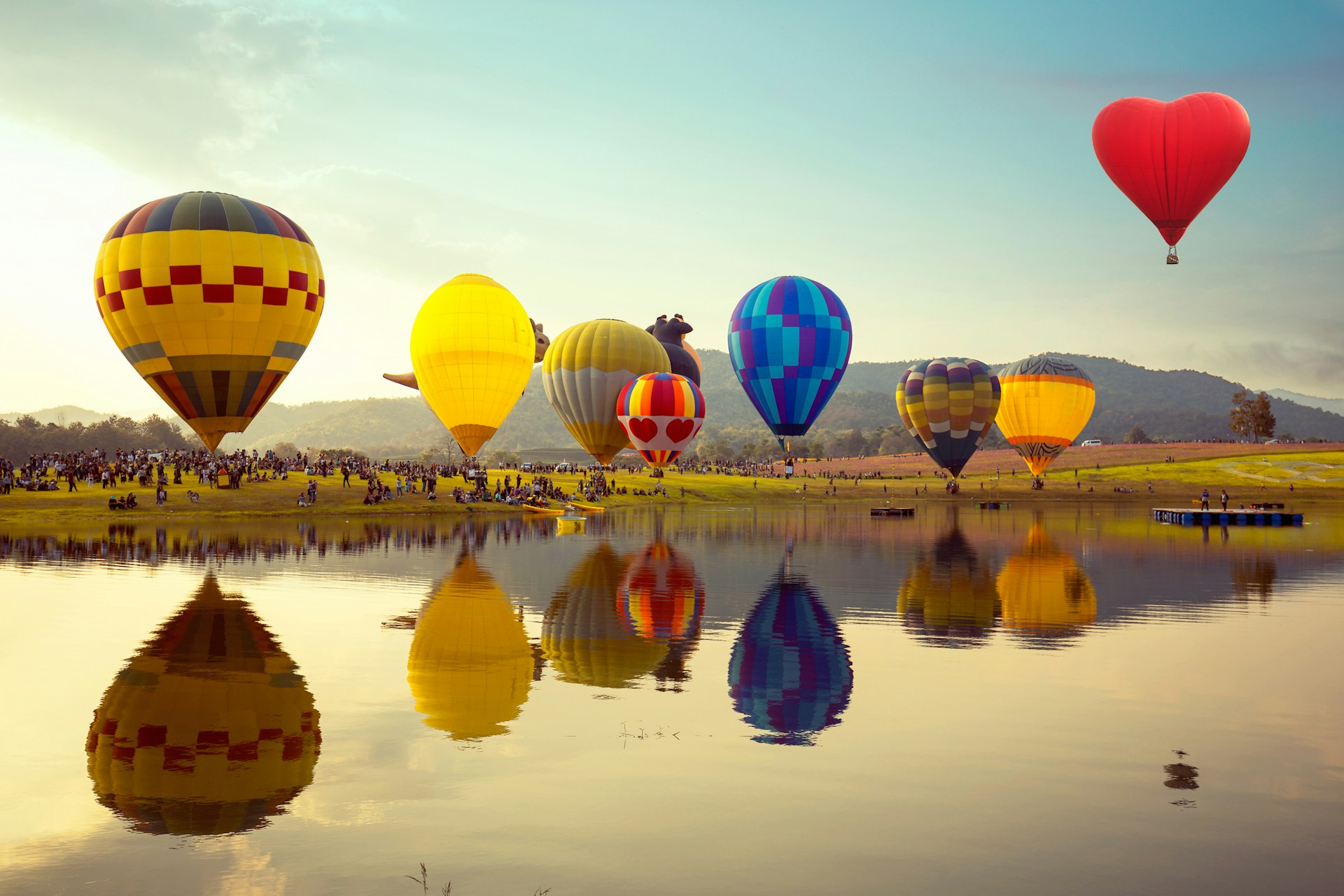
Drift away in a hot-air balloon
Visitors can experience the peaceful thrill of hot-air ballooning any time of year with several companies including Rainbow Ryders, Inc. and World Balloon. Balloonists meet at the launch site in the pre-dawn hours as fans and flames inflate the balloon envelopes. Once ready, balloons gently lift off for a 360-degree view of the city, Sandia Mountains and Río Grande. Once landed, customers may enjoy a traditional Champagne toast to their flight. Learn why Albuquerque is called the Ballooning Capital of the World at the Anderson-Abruzzo International Balloon Museum.
Get your kicks on Route 66
Albuquerque has one of the best-preserved stretches of Route 66 in the nation. Period neon signs, diners and motor lodges line Central Avenue that travels east to west through the city. Nob Hill between San Mateo and Girard avenues has retro boutiques, record shops, contemporary dining and brewpubs, all awash in the glow of neon celebrating the Mother Road.
Central continues west past the University of New Mexico and the Route 66 Diner, and into downtown with dive bars proud of the title, art galleries and upscale dining. The Kiva Auditorium in the Albuquerque Convention Center sees international acts and the historic Kimo Theatre, constructed in 1927 in Pueblo Deco style, hosts a range of live music, theater, dance and films. The Andaluz Hotel, built by Conrad Hilton in 1939, is known for its fine dining at MÁS Tapas y Vino, roof-top bar Ibiza and New Mexico Territorial Revival architecture with original murals.
Across from the ABQ BioPark, El Vado Motel is a classic Route 66 stop partly funded by the City of Albuquerque that has local restaurants, a local brewery and splash pad for kids that’s open to the general public as well as renovated rooms for overnight guests.
Summit the Sandias
Albuquerque may have a desert reputation, but the 37,278-acre Sandía Mountain Wilderness to the city’s east climbs to alpine elevations that see orchids in the summer and snow in the winter. More than 100 miles of established trails stitch throughout the wilderness etched with canyons filled with aspens. The most difficult trek is the La Luz Trail, which climbs 3775ft over 8 miles to the Sandía Crest at 10,678ft.
Other trails along the top of the mountain pass through pine forest and wildflower-studded glades. Seemingly every other turn offers soaring views of the expansive landscape almost a mile below. There are no facilities within the wilderness area and hikers should carry plenty of water and snacks, be prepared for cooler temperatures, and have a plan for returning before sundown. A popular option is to hike up and take the Sandía Aerial Tram back down; verify ticketing and operations beforehand.
Or take the tram to the top
If you don’t feel like hiking to the top of the Sandía Mountains, the Sandia Peak Aerial Tram travels 2.7 miles and nearly 4000ft to its terminal at 10,378ft above sea level. The 15-minute “flight” passes over the mountainous wilderness below, and wildlife including bears can sometimes be seen.
From the top visitors see the lights of Albuquerque below often with a spectacular sunset backdrop. Hike the trails at the top, snow play at Sandia Peak Ski Area and enjoy dinner with a view at Ten 3 restaurant (reservations required).
Celebrate Albuquerque’s First People
Learn more about New Mexico’s Native American nations at the Indian Pueblo Cultural Center where cultures, art, traditions and histories of each of the 19 Pueblos are shared through artifacts, interactive video kiosks and video interviews with Tribal elders. Pueblo dance demonstrations take place on weekends in the courtyard.
Enjoy lunch and dinner at the Indian Pueblo Kitchen where traditional Pueblo ingredients in contemporary recipes are explained by the chef as meals are prepared, and shop Shumakolowa Native Arts gallery for pottery, jewelry and other fine art created by Pueblo artisans.
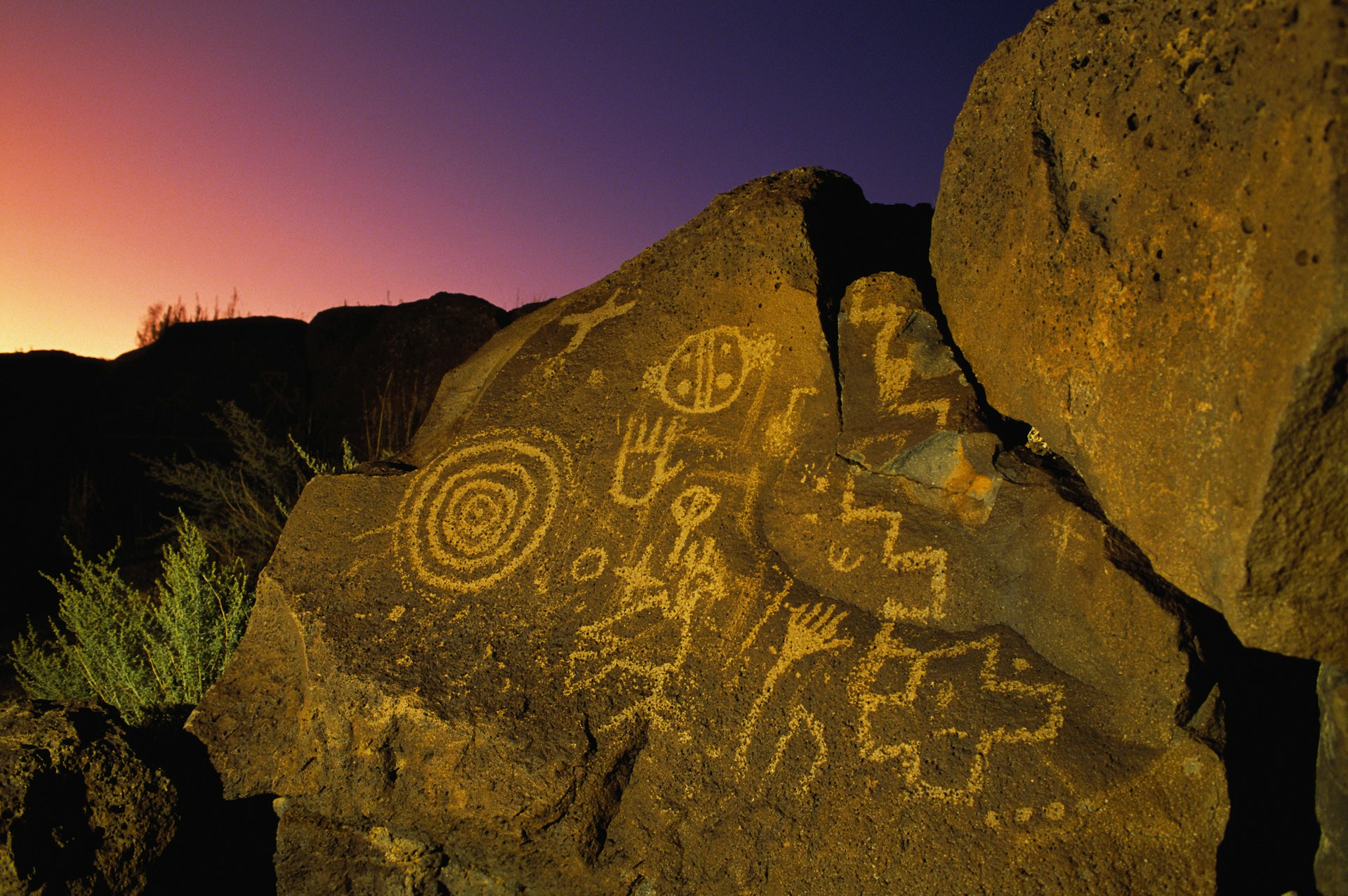
Hike through an ancient art gallery
Petroglyph National Monument protects thousands of images pecked into basalt boulders by Native Americans some 700 years ago, and is considered an important area to Pueblo nations today. Throughout this 7200-acre park geometric, zoomorphic and anthropomorphic designs emerge from the dark volcanic boulders that cover this 17-mile escarpment on Albuquerque’s Westside. Four established hiking trails lead to the work of ancient artists who painstakingly pecked away the dark desert varnish to reveal lighter rock beneath. Maps are available at the Information Center that also has a Western National Park Association store.
Forest bathe in the Bosque
The Río Grande flows north to south through the middle of Albuquerque, and contains a portion of the largest continuous cottonwood forest in the nation. This forest, locally called the bosque (pronounced “boss-key,” Spanish for woods), is home to migrating sandhill cranes, bald eagles, porcupines, Mexican free-tailed bats and other animals. Mellow hiking trails wend through towering cottonwoods that turn honey yellow in the fall. The Rio Grande Nature Center State Park at the west end of Candelaria Road has observation stands overlooking wetlands filled with turtles and birds, and exhibits explaining the ecology of the Río Grande that flows from the Rocky Mountains to the Gulf of Mexico.
Time travel through Albuquerque’s museums
Albuquerque’s museums detail the city’s diverse and storied history from when dinosaurs roamed the shallow sea here some 250 million years ago to the city’s role in ushering in the Atomic and Space ages. In Old Town, the New Mexico Museum of Natural History and Science displays skeletons of an Allosaurus, Stegosaurus and other fossils from Albuquerque’s prehistoric past. The nearby Albuquerque Museum presents the art of Georgia O’Keeffe and other New Mexico masters.
Get close and personal with rattlers at the American International Rattlesnake Museum and learn the importance of these oft-misunderstood reptiles and other desert denizens.
¡Explora! is filled with hands-on exhibits that explore physics, math and art, and the National Museum of Nuclear Science and History examines Albuquerque’s role in the development of the Atomic Bomb, the Cold War, and the complex issues regarding atomic energy.
Make United soccer a goal
New Mexico United pro soccer club has gained national attention for both the quality of its players and the enthusiasm of its fans. Currently playing at Isotopes Park, the home field of the city’s beloved Triple-A Isotopes baseball team (yes, they took their name from a Simpsons cartoon episode), New Mexico United has gained a reputation for exciting games and its vibrant, inclusive fan base. A special section is reserved for ardent fans collectively called the Curse who parade with costumes and drums, and are quick to set off smoke bombs whenever United scores. It’s a party atmosphere that gets even non-sports fans on their feet cheering.
Go on safari at the ABQ BioPark
Fantastic for kids and adults alike, the Albuquerque BioPark follows the 1885-mile journey of the Río Grande from its trout-filled headwaters in Colorado to the Gulf of Mexico. Rescued sharks, sea turtles, otters and other beings that rely on the river and the Gulf it empties into are exhibited, and visitors can enjoy lunch and dinner in front of a 285,000-gallon reef aquarium at the Shark Reef Café. Outside, botanical gardens explain the medicinal and cultural importance of native New Mexico plants.
The four-acre Sasebo Japanese Garden features a large koi pond and waterfall designed by Toru Tanaka, a landscape architect from Albuquerque’s sister city of Sasebo. At the ABQ BioPark Zoo, travel the continents learning about elephants, giraffes, great apes, hippos, big cats, polar bears, reptiles, penguins and other species at this 64-acre, Association of Zoos and Aquarium-accredited zoo.
Take a spin around town
Mountain bikers shred the foothills of the Sandía Mountains that contain almost 2600 acres of singletrack that rollercoasters through the high desert. Road cyclists can reach much of the city via Albuquerque’s 400-miles of paved trail system, including the 16-mile paved Paseo del Bosque Trail that parallels the Río Grande. Routes Bicycle Tours rents bikes and leads themed tours that include wine tastings and taco stops.
Come to Albuquerque hungry
Albuquerque is known for its New Mexican cuisine, and locals argue fiercely over which restaurants have the best chile. Favorites such as El Modelo, Sadies, and Duran’s serve classic New Mexico dishes such as chiles rellenos, stuffed sopapillas, carne adovada and enchiladas, and are beloved for a reason.
But Albuquerque is more than New Mexican cuisine. The Sawmill Market is an indoor food hall with a variety of vendors offering everything from Vietnamese street food to small batch pasta plates. Campo at Los Poblanos Inn uses ingredients harvested from the surrounding farm, as does Farm to Table. Sixty-Six Acres across from the Indian Pueblo Cultural Center gets creative with fusion plates such as its New Mexican Shrimp and Grits and Korean Fried Chicken Bowl. At Tablao Flamenco, marvel at the grace and power of flamenco dancers while enjoying authentic Spanish tapas.
Unwind with award-winning wine
New Mexico is the oldest wine-producing region in the United States, thanks to Spanish friars planting grapes for sacramental wine in the early 1600s. With similar elevation and climate to parts of Spain and France, Albuquerque’s mature wine scene impresses internationally. Gruet is based in Albuquerque, and invites visitors to sample their Méthode Champenoise sparkling wines in their tasting room. Casa Roñdena is known for its Andalusian-spired architecture and award-winning Meritage. Located in Old Town, D.H. Lescombes Winery and Bistro serves meals aside its Heritage Pinot Noir and other varieties. Albuquerque also has a robust microbrew scene with breweries including Marble, Boxing Bear, La Cumbre, Nexus and Bosque taking home national and international awards, and turning heads in the industry.
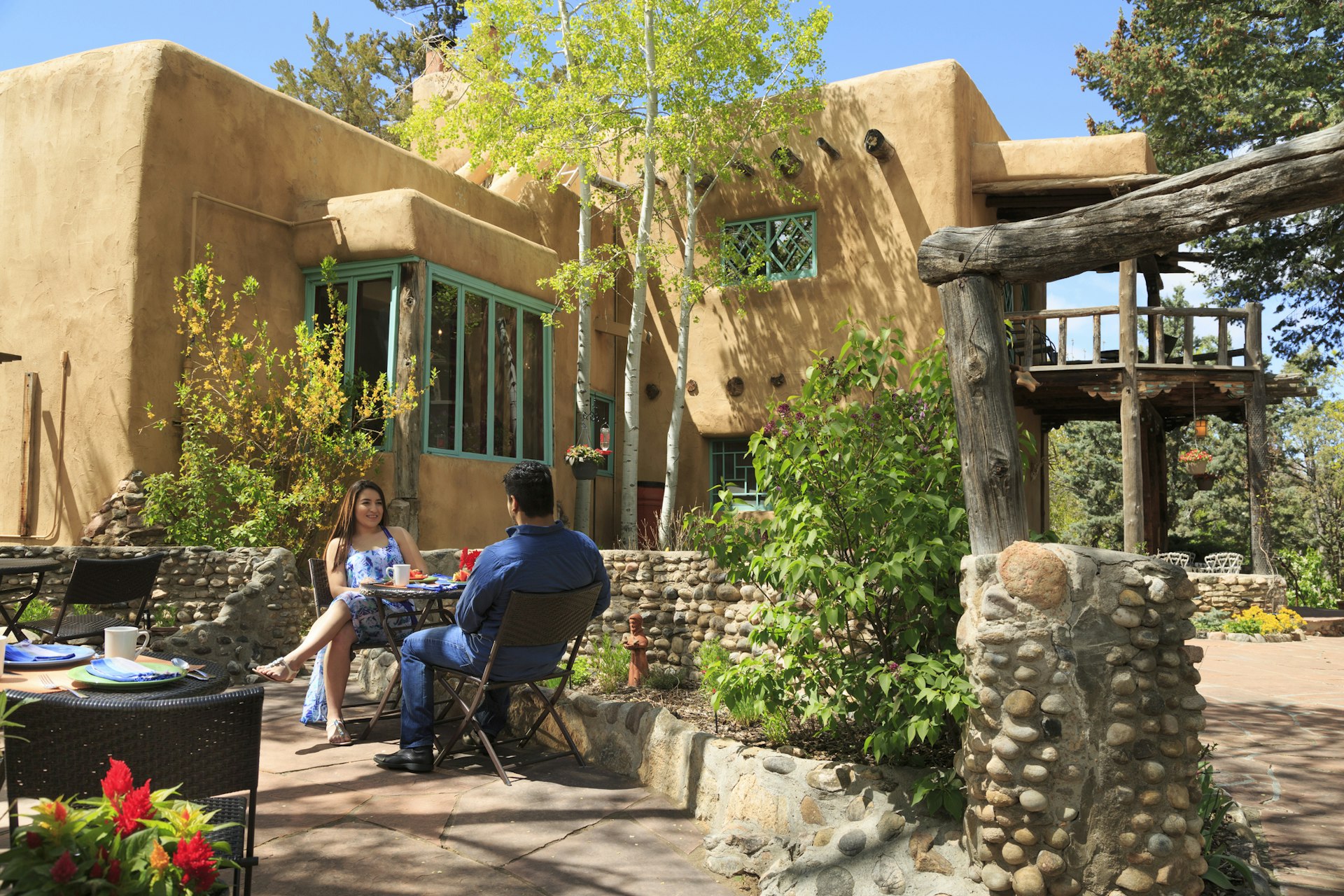
Explore beyond Albuquerque
Centrally located, Albuquerque makes a great point from which to explore the rest of New Mexico. Travel an hour west on I-40 to Acoma Pueblo and take a guided tour of this ancient village atop a mesa that is one of the oldest continuously inhabited communities in the United States. A half-hour east on I-40 leads to the Turquoise Trail that travels north on NM 14 to Santa Fe.
Along the way, you'll find Madrid, which was once a mining town but is now filled with brightly colored art galleries, restaurants, local shops and snack stops. Farther north, Cerrillos is an Old West town that's been featured in several movies including Young Guns.
Take the more direct route to Santa Fe via I-25 to explore all the City Different has to offer including Meow Wolf, an interactive fun house-meets-haunted house supported by Game of Thrones author George R.R. Martin. South of Santa Fe near Cochiti Pueblo, Kasha-Katuwe Tent Rocks National Monument contains otherworldly geological formations. Several trails wind through these surreal, cone-shaped formations and slot canyons.
You might also like:
Finding sanctuary in one of America’s only Native-owned breweries
A do-it-yourself Breaking Bad tour of Albuquerque
Indigenous cuisine revitalization: best places to sample traditional foods

